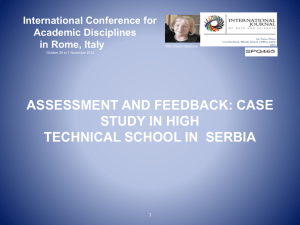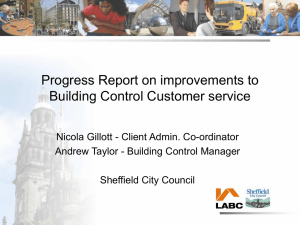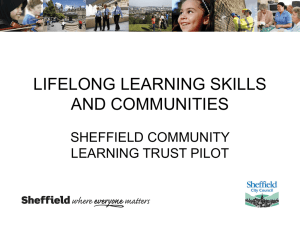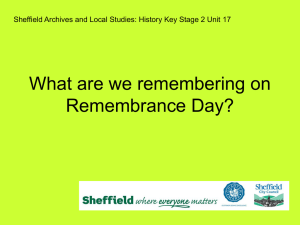Getting Rights Right - University of Sheffield
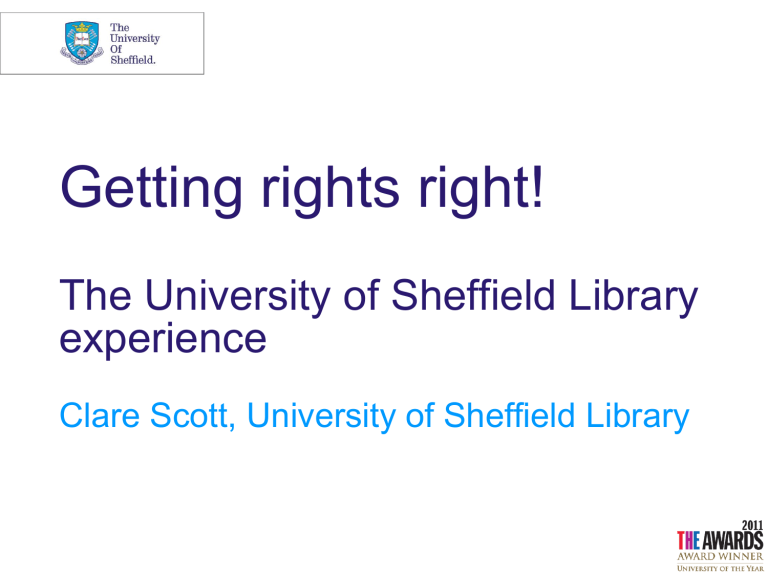
Getting rights right!
The University of Sheffield Library experience
Clare Scott, University of Sheffield Library
Contents
• Rights either side of the point of digitisation – Our side
• Contracts & terms of donation
• Copyright Risk Matrix
• Management of archival materials
• Plan of action – our solution a structured policy
• Case Studies (with pictures!)
• Rights either side of the point of digitisation – Other side
• Rights protection & social media
• Other legal considerations
15/04/2020 © The University of Sheffield
2
Rights either side of the point of digitisation – OUR SIDE
• Archiving an e-collection in a repository constitutes reproduction – it could be copyright infringement
• Navigating the variety and complexity of archival material
(composite items) e.g. a map or score with annotations
• Coping with the rapidly ‘developing’ technology formats of material – competition & built-in obsolescence
• Keeping abreast of changes in the legal environment e.g. Hargreaves
15/04/2020 © The University of Sheffield
3
Terms of donation
• Donor may not be rights owner!
• Good practice is ask for donation with copyrights etc. – format-shifting & re-use
• Items donated in pre-digital era – issues that were not thought of
• Seeking permission retrospectively can be difficult
15/04/2020 © The University of Sheffield
4
Copyright Risk Matrix
Impact of the digital environment moves
Risk to
High Risk
Low
Probability
High Risk
High
Probability
High Risk
High Probability
Low Risk
Low
Probability
Low Risk
High
Probability
15/04/2020 © The University of Sheffield
5
Archives through time
• Pre-digital era of acquisition – stabilising conservation/stop deterioration
• Pre-digital era of access – increased demand meant creation of facsimile types to protect fragile materials
• Pre-digital and early-digital formats are quickly not readable – format-shifting
• Digital era – digitisation becomes common practice
….we quickly move across the risk matrix
15/04/2020 © The University of Sheffield
6
Plan of action
• Step 1 – define your stuff
• Step 2 – define what you will do to the stuff
• Step 3 – cross-reference steps 1 and 2 to create policy for decision-making
• Step 4 – be aware that steps 1 & 2 are never stable!
15/04/2020 © The University of Sheffield
7
Step 1. Defining our stuff
1. Archives are driven by collections
2. Collection development policy defines intellectual & thematic scope – it should also define the format collecting policies
3. Awareness of your formats allows you to develop systematic IP policies
4. Bonus = Digitisation workflow runs smoother and faster if dictated by format type
15/04/2020 © The University of Sheffield
8
Step 2. Progress of stuff
Give a copy?
Is it legal?
Make a copy?
DARK
ARCHIVE
CDPA88 s.38-40
Allow copying?
Host a copy?
Controlled access
ARCHIVE
OTHER
SIDE
15/04/2020 © The University of Sheffield
9
Not Legal?
• VHS tape of all BBC broadcasts from the opening ceremony of
Hull Fair for last 10 years
• DVD burn of the fairground clip from
‘Saturday night,
Sunday morning’ film
15/04/2020 © The University of Sheffield
10
Not copiable?
• A modern circus programme donated by an enthusiast (not the printer)
• A letter written to the donor from a colleague
• Ticket stubs and booklet for launch of new roller coaster at Alton Towers 1990s
15/04/2020 © The University of Sheffield
11
Step 3 – Policy matrix
(very simplified)
What have we got?
Letters
Is it legal?
Photographs
Published materials
Plans
Etc.
Can we make a copy?
Can we supply a copy?
Can we host a copy?
15/04/2020 © The University of Sheffield
12
Example 1 – site plan
13
15/04/2020 © The University of Sheffield
15/04/2020 © The University of Sheffield
14
Example 2 – postcard 1912
15
15/04/2020 © The University of Sheffield
Example 2 – postcard today
16
15/04/2020 © The University of Sheffield
Example 3 – oral history resource
17
15/04/2020 © The University of Sheffield
Example 4 – illegal content?
18
15/04/2020 © The University of Sheffield
Example 5 – illegal item?
19
15/04/2020 © The University of Sheffield
Rights either side of the point of digitisation – OTHER SIDE
• Managing demands for re-use of material
(commercial and non-commercial)
• Combatting the increase of unauthorised filesharing via expansion of social media e.g.
Facebook, Tumblr, Pinterest, Squidoo,Twitter
20
15/04/2020 © The University of Sheffield
21
Some examples...
• Fairground fan facebook pages
• Single web re-use in an inappropriate way – “Fat
Lady Show” image used by diet website
• 2d – 3d re-use – can a plan for a ride allow the ride to be built?
15/04/2020 © The University of Sheffield
Rights protection & social media
• Watermarking solutions?
• Creative commons licences – why not?
• Copyright statement and declaration forms
– reproducing the paper experience
(Library privilege)
22
15/04/2020 © The University of Sheffield
Other legal considerations
• Data Protection
• FOI
• Defamation/Obscene Publications
• Privacy/Confidentiality
• And last of all... Archive ‘ethics’ vs censorship
15/04/2020 © The University of Sheffield
23
Examples...
• Children or people photographed
• Nudity?
• Private property – showmen’s lorries, wagons and yards
• ‘Racy’ fairground artwork
15/04/2020 © The University of Sheffield
24
Contact details
• Clare Scott, Copyright Officer c.scott@shef.ac.uk
• Ian Trowell, Digital collections manager,
National Fairground Archive i.trowell@sheffield.ac.uk
25
15/04/2020 © The University of Sheffield

